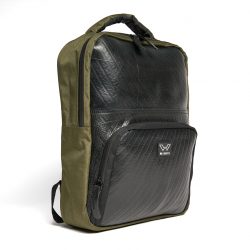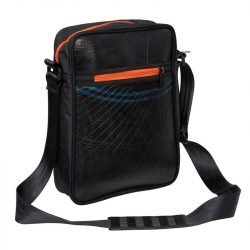You might be shocked at reading that the annual production of solid waste in the world is estimated at 11.2 billion tons. This is (well over) a ton for every human inhabitant on earth.
We know that recycling plays an active role in the use of resources. However, plastics remain a big challenge. Its production has increased drastically in recent decades, reaching an annual production of 460 million tons.

Regarding plastic, it is estimated that “only 9% of all the waste that has been produced throughout history has been recycled,” according to the UN environment. As a resault, 79% has accumulated in landfills, dumps, or in the environment.
Facing these alarming figures, the first measure should always be the minimization of waste. As we discussed in a previous article, towards a lifestyle plastic vrij.
On the other hand, it is key to work hard on the recovery of materials and energy that come from waste, transforming them into renewed products.
And so it comes…
Upcycle is reusing something in order to increase its value. This can be done by rescuing old objects, or even products discarded by the industry, to reconvert them into items with renewed value.
3 ways to seize upcycling
1- Search at home before buying, transform objects into solutions
Firstly, some time ago we talked about being a conscious consumer. It is super important to search at home before buying. Evaluate if we really need that product. Try to avoid falling into the tempting impulsive purchases proposed by the traditional market.
On many occasions we can take objects and elements from the house that we consider obsolete resulteert transform them into something that solves a need. We can reuse plastic containers or cans to make flower pots. Also, it’s possible to redesign clothes that you thought you weren’t going to wear anymore to give them another life.The Amsterdam Fashion Academy it’s currently dictating workshops about it. Also, New York has an Upcycle Design School !
Search online for sustainable solutions and let your creativity flow. Here you can see ideas on how to upcycle at home, organized by materialities!
2- Compost: at home or communally
Have you thought about… composting at home? Composting is also a way to raise the level of organic waste and turn it into compost for the Earth. It’s a beautiful way to close a circuit in a closed way. By composting you can reduce your household garbage up to 30%.
Composting at home is also a way to keep track of the organic waste we generate. Besides, it may help us think about how to minimize food waste. The best part is that after a few months, we will have a great fertilizer for our plants!
Another practical way is to bring your organic waste to community composters. The city of Amsterdam has this map available to select the one that is most convenient for you.
3- Encourage producers who upcycle:
We have the power to make purchasing decisions that have an environmental and social impact. Part of being a conscious consumer is searching for complete information about the route of the products we buy.
You can choose products that contain upcycled raw materials. Many of them are made with products that are discarded by the industry and that, if not rescued, would end up as garbage.
Here are some incredible options from our store that will surprise you!
Join a more conscious way of buying!




